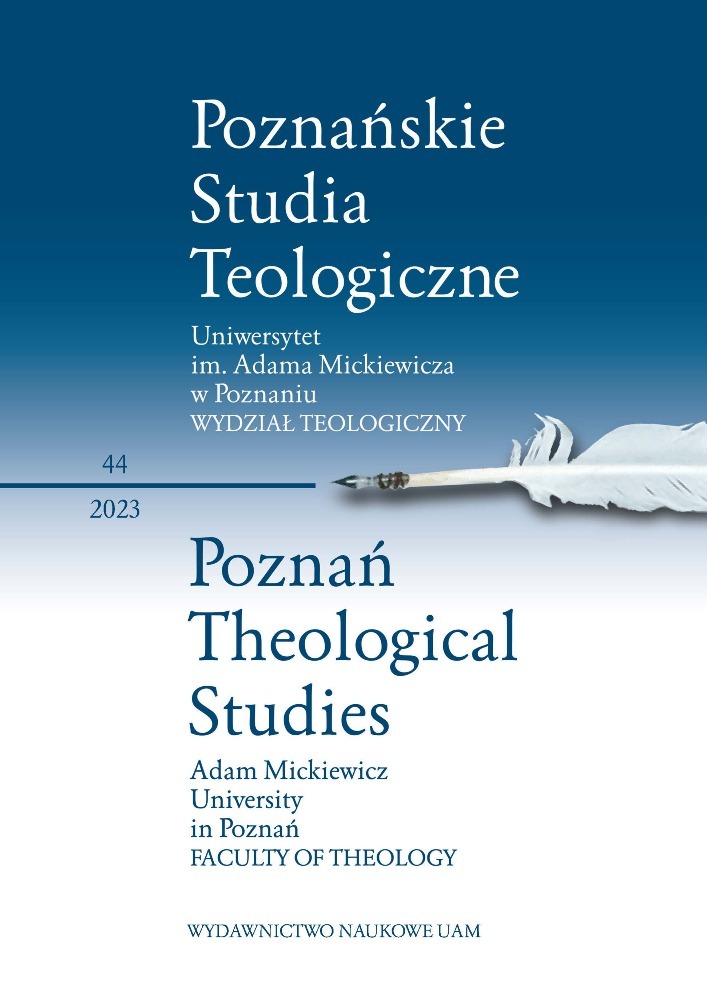Abstract
Man understood as the image of God has an inalienable right and the ability to express his identity as a woman or as a man. This proves the ontological equality of a man and a woman, equally called to overcome the limitations of individual nature. The modern movements of women’s liberation efforts in the pursuit of freedom often lose sight of the basic sense of humanity. The result is sometimes their highly confrontational style of struggle for their own separateness and autonomy, leading to the achievement of an exclusive position and total opposition to the male form of leadership in community life. This seems absolutely strange to Jadwiga Zamoyska’s attitude. Meanwhile, today a woman, like a man, needs to rediscover the lost aspects of Christianity in herself, which would allow her to constantly remain in harmony with herself.
Riferimenti bibliografici
Breckenhagen K., Die Ikone der „Gottesmutter von Vladimir“ und ihre byzantinischen Parallelen, „Kyrios” 3 (1963), pp. 146–151.
Behr-Sigel E., Ware K., L’ordination de femmes dans l’Église orthodoxe, Paris 1998.
Chałupka W., Jadwiga z Działyńskich Zamoyska — niewiasta mężna, wychowawczyni mądra. Verba Sacra, http://www.verbasacra.pl/index.php?option=com_content&view=article&id=191:verba-sacra-w-zakopanem-generaowa-zamoyska [accessed: 25.02.2016].
Consulta Teologica Anglicana-Ortodossa negli USA, Dichiarazione sull’ordinazione delle donne (New York, 1976), in: Enchiridion Oecumenicum. Documenti del dialogo teologico interconfessionale, vol. 2: Dialogi locali 1965–1987, eds. G. Cereti, S.J. Voicu, Bologna 1988, pp. 1219–1223.
Czachowska K., Generałowa Jadwiga Zamoyska (1831–1923). Życie i dzieło, Poznań 2011.
Evdokomov P., Kobieta i zbawienie świata, transl. E. Wolicka, Poznań 1991.
Goriczewa T., Córki Hioba. Chrześcijaństwo a feminizm, transl., ed., G. Ojcewicz, Szczytno 2023.
Gwyn McDowell M., The iconicity of priesthood: male bodies or embodied virtue?, ‘Studies in Christian Ethics’ 26 (2013) no 3, pp. 364–377. DOI: https://doi.org/10.1177/0953946813484412
Harrison N.V., Orthodox arguments against the ordination of women as priests, in: Women and the priesthood, ed. T. Hopko, Crestwood [USA: New York] 1999, pp. 165–187.
Hopko T., Women and the priesthood: reflections on the debate — 1983, in: Women
and the priesthood, ed. T. Hopko, Crestwood [USA: New York] 1999, p. 235.
Jan Paweł II, Encyklika Evangelium vitae, Watykan 1995.
Kałużny T., Święcenia kapłańskie kobiet z perspektywy prawosławnej, „Polonia Sacra” 19 (2015) no 4 (41), pp. 133–153. DOI: https://doi.org/10.15633/ps.1096
Jazykova I., Świat ikony, transl. H. Paprocki, Warszawa 1998.
Paprocki H., Diakonisy (historia i współczesność), „Elpis” 4/6 (2002), pp. 261–272. DOI: https://doi.org/10.31743/vp.10379
Szafrański L., Diakonisy i ich rola w pierwotnym Kościele, „Vox Patrum” 9/17 (1989), pp. 737–755.
Szmydki R., Współczesna teologia o kobiecie, „Collectanea Theologica” 57/4 (1987), pp. 55–64.
Uspienski L., Teologia ikony, transl. M. Żurowska, Poznań 1993.
West Ch., Eros i agape. Miłość, która daje szczęście, transl. A. Skucińska, Kraków 2011.
http://www.verbasacra.pl/index.php?option=com_content&view=article&id=191:verba-sacra-w-zakopanem-generaowa-zamoyska [accessed: 28.03.2023].
Licenza
Copyright (c) 2023 Jarosław Moskałyk

Questo lavoro è fornito con la licenza Creative Commons Attribuzione - Non commerciale - Non opere derivate 4.0 Internazionale.

